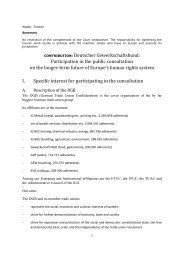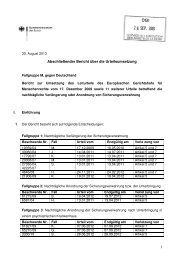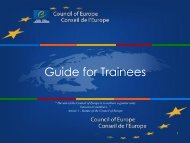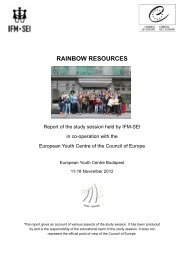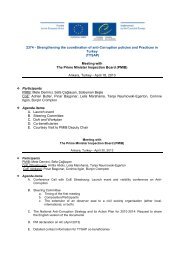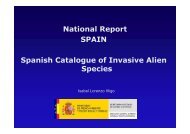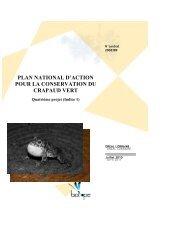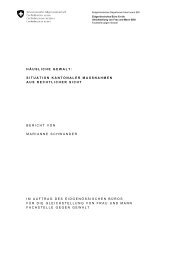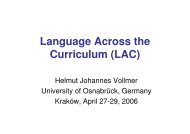Money laundering through money remittance ... - Council of Europe
Money laundering through money remittance ... - Council of Europe
Money laundering through money remittance ... - Council of Europe
Create successful ePaper yourself
Turn your PDF publications into a flip-book with our unique Google optimized e-Paper software.
<strong>Money</strong> Laundering <strong>through</strong> <strong>Money</strong> Remittance and Currency Exchange Providers - 2010 <br />
„Foreign exchange centres‟ (centros cambiarios) are either natural or legal persons that<br />
do not require a license in order to engage in currency transactions, but whose operations<br />
are limited to the equivalent <strong>of</strong> USD 10 000.00 per customer per day. They must be<br />
registered with the Tax Administration Service.<br />
38. In Slovakia there are three types <strong>of</strong> foreign currency exchange providers:<br />
Currency exchanges – require a „simple FX license‟ that authorises natural or legal<br />
persons to purchase or sell local currency against foreign currency (<strong>money</strong> transfers are<br />
not included);<br />
FX business providers I – legal persons with a minimum capital requirement <strong>of</strong><br />
EUR 333 333. Their license allows them to both purchase and sell local currency against<br />
foreign currency on their own or their client´s behalf but only in cashless form. They are<br />
permitted to make only domestic <strong>money</strong> transfers; and<br />
FX business providers II – legal persons with minimum capital requirement <strong>of</strong><br />
EUR 33 333. Their license authorises them to carry out or intermediate cross-border<br />
<strong>money</strong> transfers both in local or foreign currency in cash. They are permitted to make<br />
foreign <strong>money</strong> transfers <strong>through</strong> banks only.<br />
39. Regarding customer identification, the same thresholds apply as for MR in most countries.<br />
The exceptions are:<br />
Table 5. Threshold Exceptions to Applicable Customer Identification Requirements<br />
COUNTRY THRESHOLD (as <strong>of</strong> 2008)<br />
Croatia HRK 105 000, i.e. appr. EUR 15 000<br />
Estonia EEK 100 000, ie. appr. EUR 6 400<br />
France EUR 8 000<br />
Japan YEN 2 000 000, i.e. EUR 15 566<br />
Germany<br />
EUR 2 500 threshold applies if the transaction is carried out <strong>through</strong> an<br />
account other than the customer‟s account;<br />
Georgia GEL 3 000, i.e. appr. EUR 1 400<br />
Greece (and Italy, Malta, Poland,<br />
Sweden, United Kingdom)<br />
Table Notes:<br />
EUR 15 000<br />
Latvia LVL 5 000, i.e. appr. EUR 7 117<br />
Lithuania EUR 6 000<br />
Moldova MLD LEI 50,000 (approx. EUR 3 500)<br />
Macau, China MOP 20 000 , i.e. appr. EUR 1 740<br />
Mexico Thresholds vary for transactions involving cash or travellers‟ cheques<br />
Slovakia EUR 1 000<br />
United States USD 1 000, i.e. appr. EUR 820<br />
1. In Mexico there are three different thresholds in order to require information for individual cash operations or with<br />
travellers cheques, as follows:<br />
- between USD 500 - 3000, information is requested;<br />
- between USD 3000 – 5000, information is requested along with a copy <strong>of</strong> the <strong>of</strong>ficial identification (identical threshold<br />
applicable also to MR);<br />
- for USD 5000 or more, information is requested and a whole file is integrated to the system (identical threshold<br />
applicable also to MR).<br />
© 2011 MONEYVAL and FATF/OECD - 17



